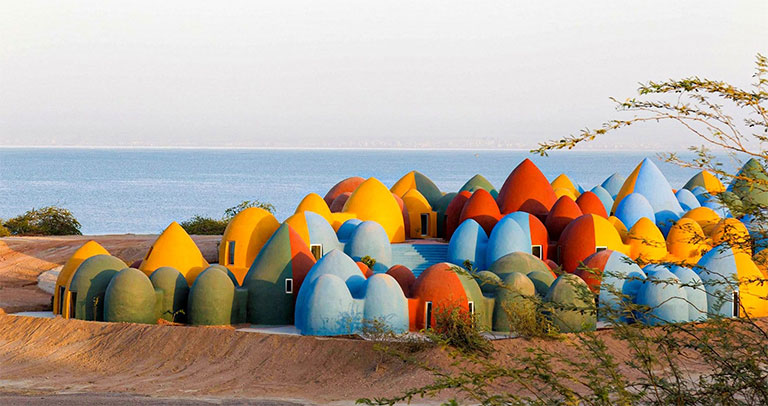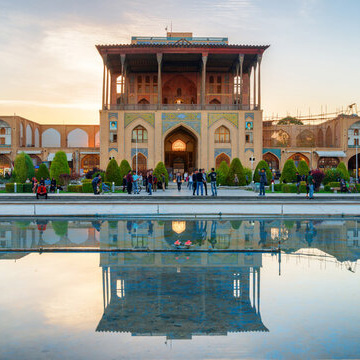The Tomb of Cyrus the Great, a Journey into the Amazing History of Iran

Cyrus the Great and His Eternal Resting Place: A Journey to Pasargadae
For those embarking on a trip to Iran, few sites are as historically significant and emotionally stirring as the Tomb of Cyrus the Great. Located in the tranquil plains of Pasargadae, this monument stands as a timeless testament to the life and legacy of a ruler who changed the course of human history. A visit here, nestled just a few hours from the vibrant city of Shiraz, offers a journey into the heart of Persian heritage and a unique opportunity to reflect on the values of tolerance and unity.
Cyrus the Great: The Architect of an Empire
Cyrus the Great (c. 600–530 BCE) was no ordinary king. As the founder of the Achaemenid Empire, the first and one of the largest empires in history, he unified diverse nations and cultures under a single banner. His empire stretched from the Mediterranean in the west to the Indus Valley in the east, an expanse that included modern-day Iran, Iraq, Egypt, Turkey, and parts of Central Asia.
However, Cyrus’s greatness was not merely in the territories he conquered but in the way he governed. Unlike many of his contemporaries, Cyrus is remembered as a liberator rather than a tyrant. His conquest of Babylon in 539 BCE is particularly notable for the respect he showed to the city’s inhabitants and their religious practices. The Cyrus Cylinder, a clay artifact discovered in Babylon, is widely regarded as the world’s first declaration of human rights. It proclaims the freedom of worship, the right to work, and the humane treatment of all peoples—principles that were revolutionary for their time and remain relevant today.

The Tomb of Cyrus: A Symbol of Simplicity and Power
Nestled in the heart of Pasargadae, the Tomb of Cyrus the Great is a masterpiece of ancient Persian architecture. Constructed from massive limestone blocks, the tomb rises on a series of six stepped platforms, culminating in a small chamber believed to have once held the king’s remains. Its unadorned yet imposing design reflects the duality of Cyrus’s character: a powerful ruler who valued humility and justice.
The tomb’s enduring significance is evident in its ability to inspire awe and respect across millennia. Even Alexander the Great, who admired Cyrus’s legacy, made a pilgrimage to this site after conquering the Achaemenid Empire. According to historical accounts, Alexander ordered the tomb’s restoration and paid his respects to a leader he considered a role model.
Pasargadae: The First Persian Capital
The tomb is part of the larger Pasargadae complex, the first capital of the Achaemenid Empire and a UNESCO World Heritage Site. As you wander through the ruins, you’ll encounter the remains of royal palaces, gardens, and ceremonial halls. The Gatehouse, with its impressive stone pillars, once welcomed visitors to the royal complex, while the Audience Hall and Residential Palace provide a glimpse into the grandeur of Achaemenid court life.
One of the most remarkable features of Pasargadae is its ancient garden layout, known as the Paradise Garden. This innovative design, with its geometric layout of water channels and greenery, became a prototype for Persian gardens and influenced garden design across the Islamic world.

A Spiritual and Cultural Experience
Visiting the Tomb of Cyrus the Great is more than a historical excursion—it’s a spiritual journey. Standing before the tomb, with the expansive Iranian plains stretching out before you, it’s easy to feel a profound connection to the past. The site exudes a sense of peace and timelessness, inviting visitors to reflect on the ideals that Cyrus championed: freedom, justice, and respect for diversity.
For those planning a trip to Shiraz, Pasargadae is an essential stop. The journey from Shiraz to Pasargadae takes you through scenic landscapes, offering a delightful contrast between the vibrant city and the serene countryside. Shiraz itself is a cultural hub, renowned for its poetry, gardens, and historical landmarks, making it the perfect base for exploring the wonders of Fars Province.
Why Visit the Tomb of Cyrus?
There are countless reasons to include the Tomb of Cyrus in your travel itinerary:
- Historical Significance: As the resting place of one of history’s greatest leaders, the tomb offers a unique window into the ancient world.
- Architectural Brilliance: The tomb’s design is a testament to the ingenuity and vision of Achaemenid architects.
- Cultural Insights: Visiting the tomb allows you to connect with the values and ideals that shaped the Persian Empire.
- Natural Beauty: The serene setting of Pasargadae, surrounded by rolling hills and open skies, provides a perfect escape from the hustle and bustle of modern life.
Plan Your Trip to Iran
Whether you’re a history enthusiast, a lover of ancient architecture, or someone seeking a deeper understanding of Persian culture, a visit to the Tomb of Cyrus the Great is an unforgettable experience. It’s a destination that combines the best of Iran’s cultural and natural treasures, offering something for every traveler.
As you plan your trip to Iran, make sure to set aside time for Pasargadae and the legacy of Cyrus the Great. Let the spirit of this ancient king guide you on a journey through time, where every step unveils a new chapter of a story that continues to inspire people around the world.
Are you ready to travel to Shiraz and visit the Tomb of Cyrus the Great?
We have planned tours for you that include the city of Shiraz.







